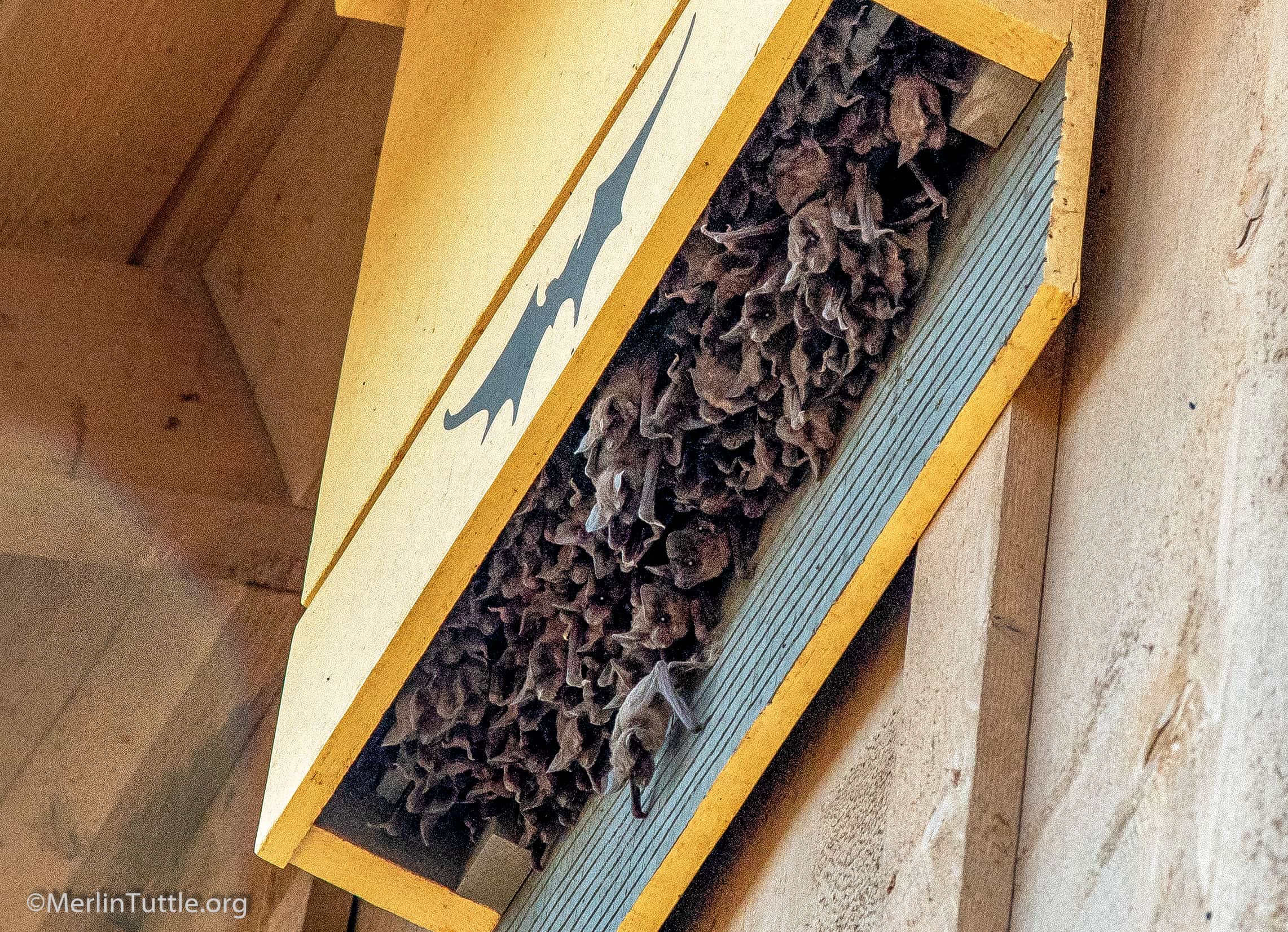Happy Halloween! As October comes to a close on All Hallow’s Eve, we are reminded of all things creepy, crawly, and altogether spooky. New horror movies premiere, and decorations adorn our spaces. Whether you like Halloween or not, you likely would agree that a common symbol of Halloween is bats. Many people see them as blood-sucking disease-carrying flying rodents that get stuck in human hair (Bat Conservation International). While these ideas are false, Halloween and the media make bats out to be some kind of seasonal monster. Bats could be an unsung hero of sustainability. 
Lesser Long-Nosed Bat Seeking Nectar (J. Scott Altenbach)
I recently had the opportunity to go bat-watching with Furman’s Outdoors club. A senior at Furman, passionate about bats, gave us a
short presentation before we headed to Sunrift Adventures, a local outdoor gear outfitter, for their annual bat-watching event. There, my group and I learned all about bats and how they contribute to the environment. I was surprised by how much I learned and by how much I thought I knew about bats. Bats contribute to global sustainability in a number of ways, including but not limited to pest control, pollination, and dispersing seeds (U.S. Fish and Wildlife).
First, bats are really efficient at eating bugs. The most common bat in South Carolina, the Big Brown Bat (Eptesicus fuscus), eats hundreds of crop and forest pests an hour. Studies found a colony of 150 Big Brown Bats ate enough corn-crop-eating pests to reduce egg-laying by millions (Bat Conservation Inventory). This is a significant impact, making bats vital to the pest control efforts of farmers. But how does this relate to sustainability? Bats save the agriculture business an estimated $3 billion per year, cutting down on pesticide costs and crop damage (U.S. Fish and Wildlife). This reduces farmers’ dependency on pesticides, which can contaminate soil and nearby water sources. The pollution caused by pesticides can harm wildlife and impact human health as well (National Library of Medicine). So, insect-eating bats are a huge help in cutting down on agricultural costs and reducing pollution.
Big Brown Bat Climbing Tree (Michael Durham/Menden Pictures)
However, not all bats eat insects; many feed on nectar. Bats are vital to the pollination of peaches, cloves, bananas, and agaves. In fact, they are the sole pollinator of agave, which is a key ingredient of tequila, contributing to a multi-billion-dollar industry (U.S. Fish and Wildlife). Feeding on the nectar of these plants, bats are important pollinators in our ecosystem.
Another food source for bats is fruit. Bats feed on a variety of fruits, contributing to a great deal of necessary seed dispersal to boost plant populations. Actually, fruit-eating bats contribute to around 95% of the seed dispersal needed for early plant growth of recently cleared rainforests (U.S. Fish and Wildlife). Bats are an important part of the seed dispersal cycle and reviving deforested land.
Bats are essential for fostering sustainable agriculture practices. Sustainable farming benefits our society economically and cuts down on harmful pollution. Basically, the more bats we can sustain in an environment, the more sustainable our communities can be. Common misconceptions about bats and our fears prevent us from realizing the potential benefits of working towards greater bat conservation.
Even writing this blog post, my friends were skeptical of bats, saying, “Didn’t they cause COVID?” This and other common misconceptions make conservation efforts more difficult and even conversations. So, next time you get the chance, help set the record straight for bats. After doing brief research, I am feeling passionate about bats and how they can benefit our communities. I plan to put up a bat box or two around the Greenbelt community and I encourage others to foster a healthy environment for bats too.  “This Texas Hill Country bat house became overcrowded within days by Brazilian free-tailed bats (Tadarida brasiliensis)”. (Tuttle, 2020)
“This Texas Hill Country bat house became overcrowded within days by Brazilian free-tailed bats (Tadarida brasiliensis)”. (Tuttle, 2020)
In short, bats could be a secret hero of sustainability. If we can be more aware of these little flying creatures, and work towards squashing bat misconceptions, we can work towards a more sustainable community. This starts on a small scale. Living in the Greenbelt, I have been able to better understand that sustainability often starts out in small and diverse ways. Next time you look up in the night sky and spot a bat swooping down, think about how the little mammal could make a big impact on working towards a more sustainable future.